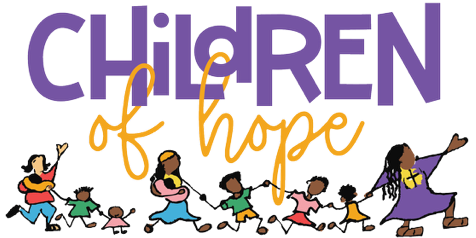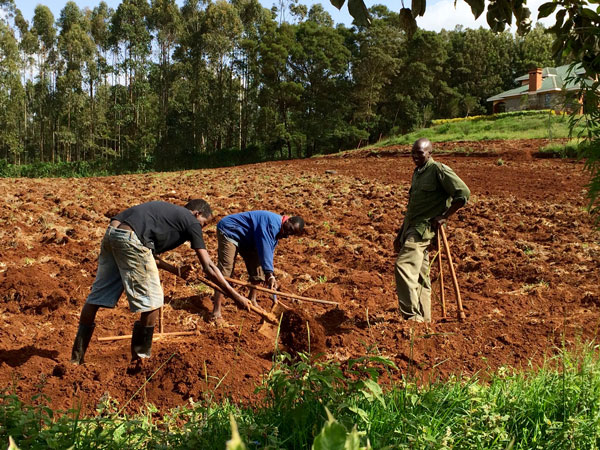
22 Aug Farm to table | Honouring agricultural traditions in Kenya
Our homes support and embrace local Kenyan traditions, the farms on our properties provide some food for our kids and a small income for our homes.
In Kenya, it’s common for people to grow their own food and most property owners do. The farms on our properties nourish the children and teach them farming skills, which empowers them to provide for themselves as adults.
Farming on the property
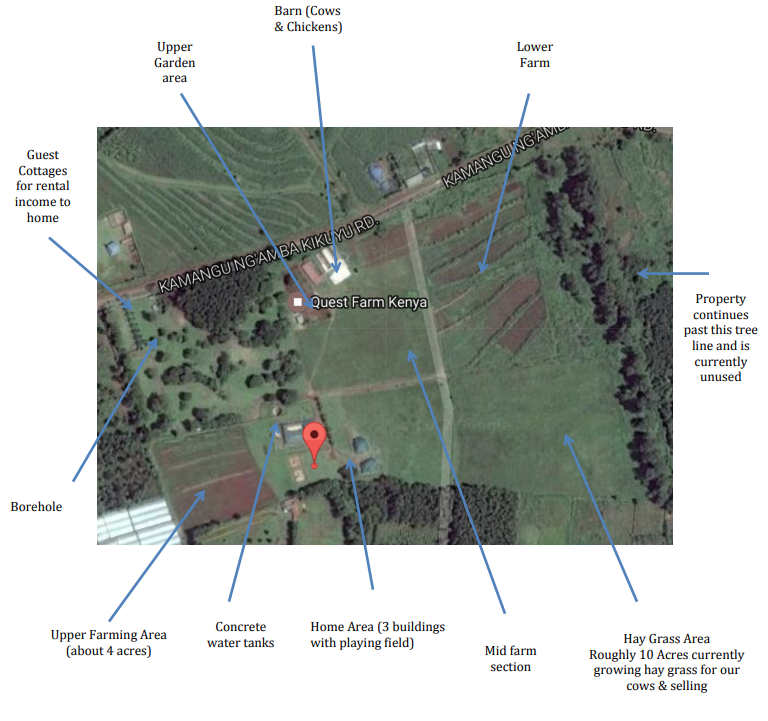
Our compound is comprised of over 50 acres, with much of it dedicated to agriculture and animals. We employ a full-time Farm Manager with over 10 years’ experience, two full-time farm assistants and casual workers on an as-needed basis. The older kids enjoy learning skills and working with them in the gardens during breaks from school and on the weekends.
We grow a variety of crops on the farm including managu (a traditional African herb), beetroots, kales, cabbage, carrots, spinach, potatoes, and tomatoes. Any excess crop is sold for income.
Half an acre is dedicated to coriander (also known as cilantro) production. We are working in partnership with a wholesaler who provides the seedlings for our farm staff to care for during the growing season. Once mature, his staff harvest the crop. The crop has a 45-day growth cycle; income generated from two harvests would support a child for a month.
The remaining property is used to grow hay to feed our cows and sell for income, and napier grass as animal fodder for the farm.
Growing skills for life

The older boys grow their own gardens close to the cottages. This is a new economic initiative inspired by an idea from Uncle Sam. The boys are growing kale, peas and managu. They tend to their crops and sell their produce to the kitchen. This teaches them responsibility and financial responsibility as they manage the funds collectively, and will use the funds for a collective purchase for their cottage.
A favourite meal – Ugali
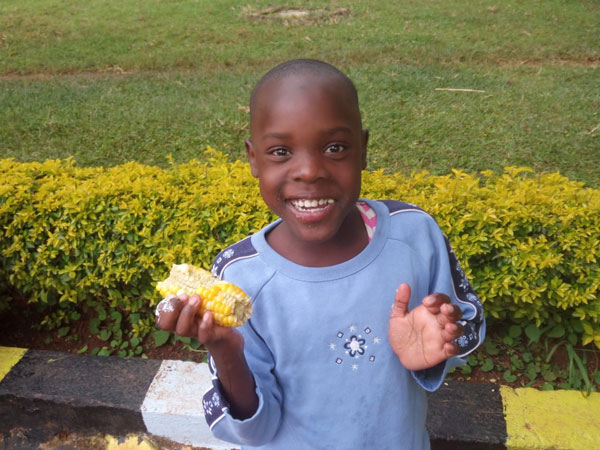
Maize (or corn) is a favourite staple that we grow both on our property. We use it to make Ugali, a thick porridge often enjoyed together at meals.
The maize is taken off the cob and laid out to dry for several days. This is usually done on a canvas in the grass outside of our main building where the kitchen is located. Once dry, it is ground up into a cornmeal consistency. Maize flour and boiling water are combined to make Ugali. It thickens up quickly and once cooled is thick enough to be formed into balls or can be cut with a knife. We serve it with sauteed cabbage or kale, or with beans.
Saying Grace
We take turns saying grace before enjoying the bounty provided for us at every meal. The aunties ask a different child to say grace at each meal. Each child speaks from the heart, thanks God and asks for the food to be blessed.
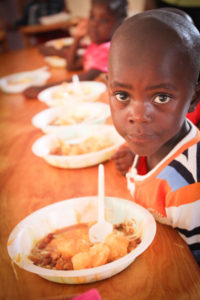
Water is life
Water fuels our agriculture and though we have a borehole that supplies plenty of fresh water for our kids and crops, there was a need for a water tank and infrastructure update on the property.
Thank you to everyone who has contributed to our $14,000 goal. We are grateful to share that we are within $50 of reaching our goal!
These funds support a long term, more sustainable system to keep water available even when power is not and as a result, lower our electricity bills. It will also rectify issues we have with water flow and pressure.
We look forward to completing this project!
…
Please join us in prayer for the a smooth completion of the project, that this strengthened access to water will support a strong growing season providing bounty to nourish our children.
